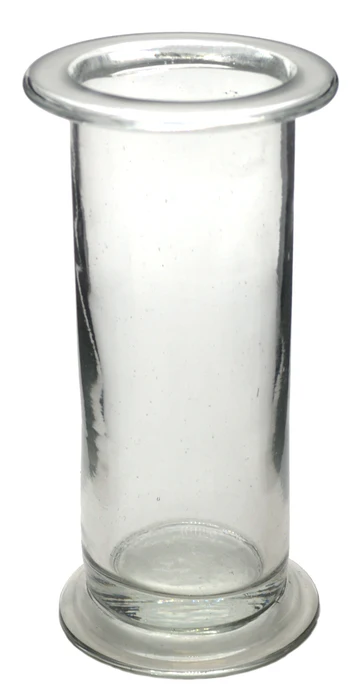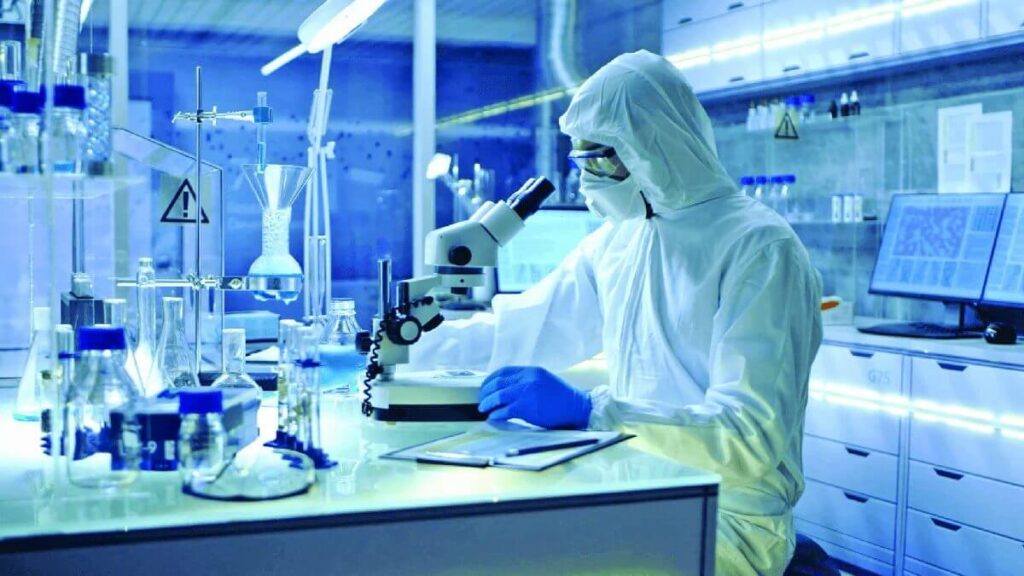
Many chemistry experiments involve the release of gases. While some gases can be safely vented through fume hoods or into well-ventilated areas, there are situations where certain gases need to be collected. In such cases, gas jars are used. The primary role of a gas jar in the laboratory, therefore, is to collect and temporarily store gases for further analysis or experimentation.
Main Features
The gas jar is a straight-sided cylindrical container with a flat, wide base that provides excellent stability when placed on a laboratory bench or in a water trough, preventing tipping during gas collection.
They feature a wide mouth which allow easy displacement of water or air and makes it convenient to introduce or remove testing materials such as splints or small apparatus. This simple, open-top design also makes it ideal for collecting, storing, and observing gases without significant pressure buildup.
Many gas jars are designed with a flanged rim or smooth lip that allows them to be sealed temporarily with a glass plate or cover to prevent gas escape during experiments. Some are also equipped with ground-glass stoppers or fitted lids to provide a tighter, more secure seal when short-term storage of gases is required.
Most gas jars are made from thick borosilicate glass, which is heat-resistant and chemically inert, allowing safe use with reactive gases and gentle heating.
For safer handling in educational settings, plastic versions are also available; these are lightweight and shatter-resistant but not suitable for high-temperature or strongly reactive experiments.
Uses
- Collecting gases by displacement: Used to collect gases over water or air during experiments, such as oxygen, hydrogen, or carbon dioxide.
- Storing gases temporarily: Holds small amounts of gas for short-term observation or testing.
- Observing gas reactions: Allows safe containment of gases to observe their color, smell, or behavior.
- Testing gas properties: Used to test flammability, solubility, or chemical reactivity of gases.
- Conducting combustion experiments: Supports burning splints or other materials to study gas-supported combustion (e.g., testing oxygen).
- Demonstrating diffusion of gases: Provides an enclosed space to observe how gases mix or spread over time.
- Displacement experiments: Helps show how one gas can displace another (e.g., carbon dioxide displacing oxygen).
Types
Gas jars generally come in a few basic types based on their design and use in the laboratory. The main types include:
- Wide-mouth gas jar: The most common type, with a broad opening for easy gas collection and insertion of testing materials.
- Narrow-mouth gas jar: Has a smaller opening to reduce gas escape and is useful for storing gases for a longer period.
- Glass gas jars: These are the traditional type, made from thick, heat-resistant glass such as borosilicate. They are ideal for experiments involving heat, flames, or reactive gases because glass is chemically resistant and allows clear observation of the gas inside.
- Plastic gas jars: Made from durable, transparent plastics (such as polycarbonate or acrylic), these are lightweight, less breakable, and safer for student use. However, they are not suitable for high-temperature experiments or for gases that might react with certain plastics. They are also quite rare. The most common gas jars are the glass type.
As mentioned earlier, most gas jars found in laboratories today are designed with a fitted lid. The lid helps reduce the loss of collected gas through diffusion. To hold a glass plate or cover securely, the mouth of the jar often features a projecting rim (flange) that provides a stable surface for sealing.
Safety
Here are the key safety precautions to remember when using gas jars in the laboratory:
- Handle with care: Gas jars, especially glass ones, can break easily; always carry them with two hands and avoid sudden impacts.
- Check for cracks or defects: Inspect the jar for chips, cracks, or scratches before use to prevent leaks or breakage during experiments.
- Use appropriate material: Choose glass jars for experiments involving heat or reactive gases and plastic jars for safer, low-risk demonstrations.
- Avoid direct flames with plastic jars: Never expose plastic gas jars to open flames or high heat as they can melt or release toxic fumes.
- Secure the jar when collecting gases: Make sure the jar is stable on the bench or in a water trough to prevent tipping or spilling.
- Dispose of gases safely: Release or neutralize collected gases according to your lab’s safety protocols to avoid environmental or health risks.
Apart from these safety tips, strive to adhere to all other laboratory safety rules. Check this post for a quick overview of the basic lab safety rules for students.



